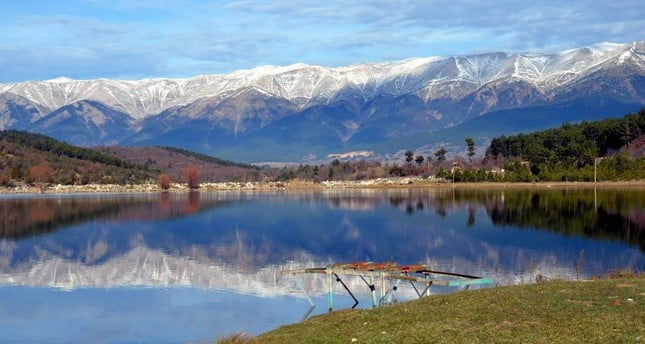Did you know that Türkiye’s northwestern Bursa, one of the former capital cities of the Ottoman Empire was also the 2022 Culture Capital of the Turkic World?
Much of this ancient spa’s prestige derives from the fact that it became the first Ottoman capital in 1326. Bursa has since developed as a vibrant commercial centre which today is made prosperous by automobiles, food and textiles, as it was by the silk trade in the 15th and 16th centuries.
The beautiful and prestigious city of Bursa has been a provincial capital since 1841 and, despite its commercial centre, has retained its pious dignity. No city in Türkiye has more mosques and tombs.
The Romans also developed the potential of Bursa’s mineral springs, and there are estimated to be about 3,000 thermal baths in the city today.
Want to know more? Take a break and read this article by Ernest Whitman Piper.
Eat, pray and love in Bursa: Former Ottoman capital keeps up with the modern
Forests. Silk. Peaches. History, comedy, a ski resort, and candied chestnuts. What foggy metropolis just a few hours south of Istanbul might I be thinking of? Is it that relaxing natural city on the Marmara Sea? That powerhouse of industry? The former and first Ottoman capital? Yes, that’s right, the Seattle of Türkiye – Bursa.
Reasons to visit Bursa
There are a few good reasons to visit “Burseattle.” It is green with overgrowth and life. All that mist promotes a healthy biosphere! Before the concrete sprawl choked the life out of Istanbul, I’m sure it too was a greenish region by the Marmara Sea like “Green Bursa” is today. Ironically, “Green Bursa” produces almost all of Türkiye’s automobiles, which in turn produce most of Türkiye’s smog. That’s how Bursa earned its other nickname, “Türkiye’s Detroit.”

Beyond the fantastic parks, Bursa’s got great old stuff left over by the Ottomans who wanted to make their city rival any other ancient capitals around. It’s packed with old-style houses, castles, and gorgeous mosques. It’s got natural hot springs for some of the oldest hamams in the old Ottoman Empire. Bursa’s two traditional products, silk and fruit, are still sold in its covered bazaars. Plus, a great comedy tradition was born in Bursa – shadow puppets.
Bursa’s speciality
But forget all that. Forget history, forget silk, forget peaches. As soon as you get off the boat at Mudanya from Yenikapı, you’re going to want to get on the bus to Bursa’s city centre and find the first İskender Kebab restaurant you set eyes on.

In the mid-1800s, İskender Usta was sitting next to his fire pit of Cağ Kebab – a bunch of greased-up garlicky lamb steaks run through the middle and roasted on a spit for hours.
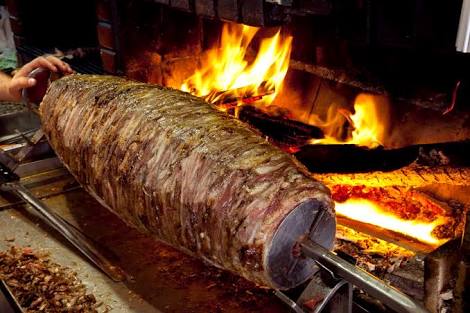
He watched the tasty melted fat drip into the ashes and sizzle away to nothingness, and felt a great despair grip his heart. So much delicious gooey cholesterol was vanishing before his Usta’s eyes. He pondered: How could he wring every last drop of artery-plugging joy from those lamb steaks? İskender realized he could tilt the whole thing vertically and, as the meat cooked, the fat would baste itself. Then, because that was not nearly fatty enough, he decided to serve the thin slices of roasted lamb with hot liquid butter and whole milk yoghurt. Add some tomato sauce, some chopped-up old bread, and he had created it: A dish which can cause heart disease in otherwise healthy twentysomethings. İskender Kebab is a miracle.
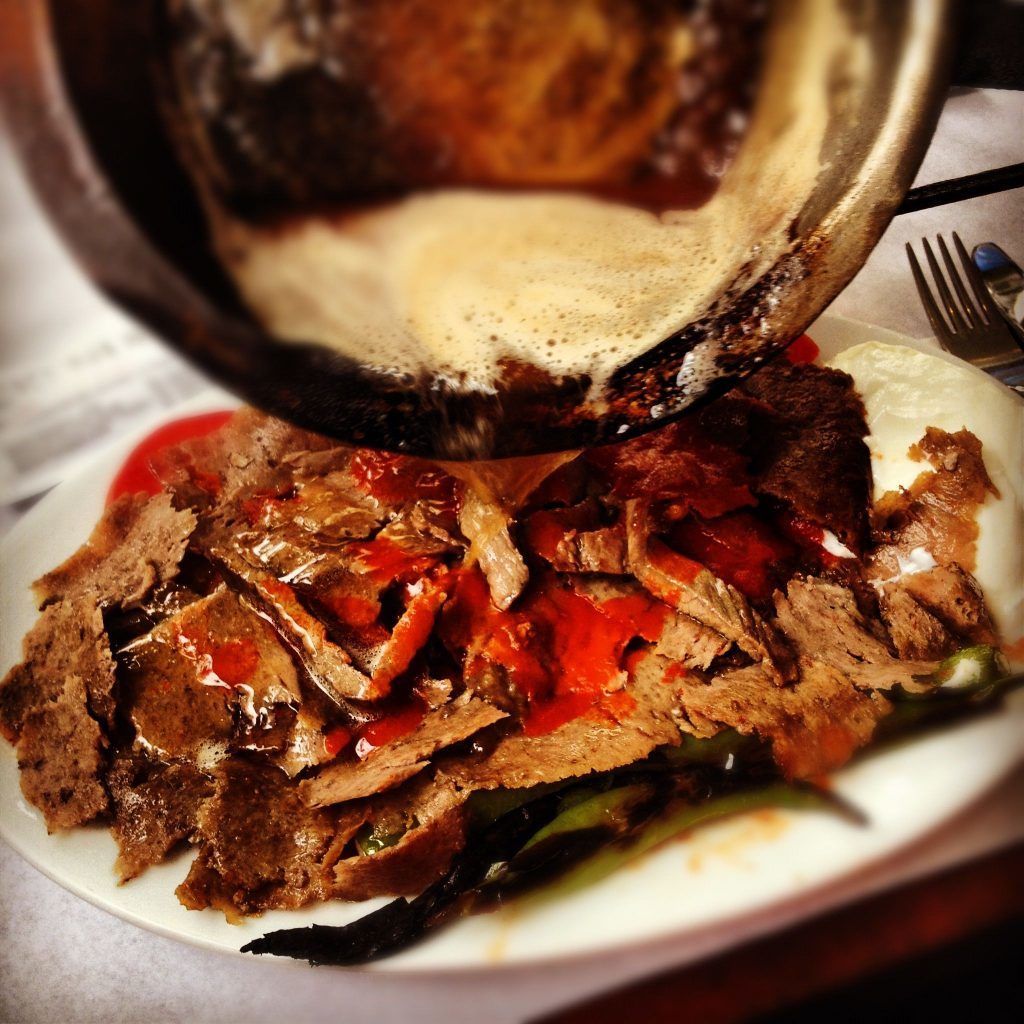
Maybe you didn’t know that the whole idea of döner kebab was invented in Bursa, and even though it’s widely in use throughout Türkiye, Europe, and really the rest of the world, it attained heroic status in Bursa. You can go to several traditional İskender spots in downtown Bursa where they use all-lamb, top-quality-butter İskender, and feast like the inhuman monster you are. While it’s served with a roasted pepper or two as a symbolic nod to vegetables, you don’t actually have to eat them and can safely proceed to the glorious mouthwatering roasted meat. İskender Kebab is the perfect food.
A city filled with history
You’ll probably be exhilarated after stuffing yourself, so maybe take an idle walk through the city centre. Bursa was the capital for almost 200 years and holds some unbelievable architecture inside its walls. Yes, yes, it has actual walls, and it has actual tombs of the first Ottoman sultans. The Külliye – the social complex featuring a mosque, a school, a bath, and a marketplace – flourished here, and provided the rest of the empire with a ready model for its urban plans.
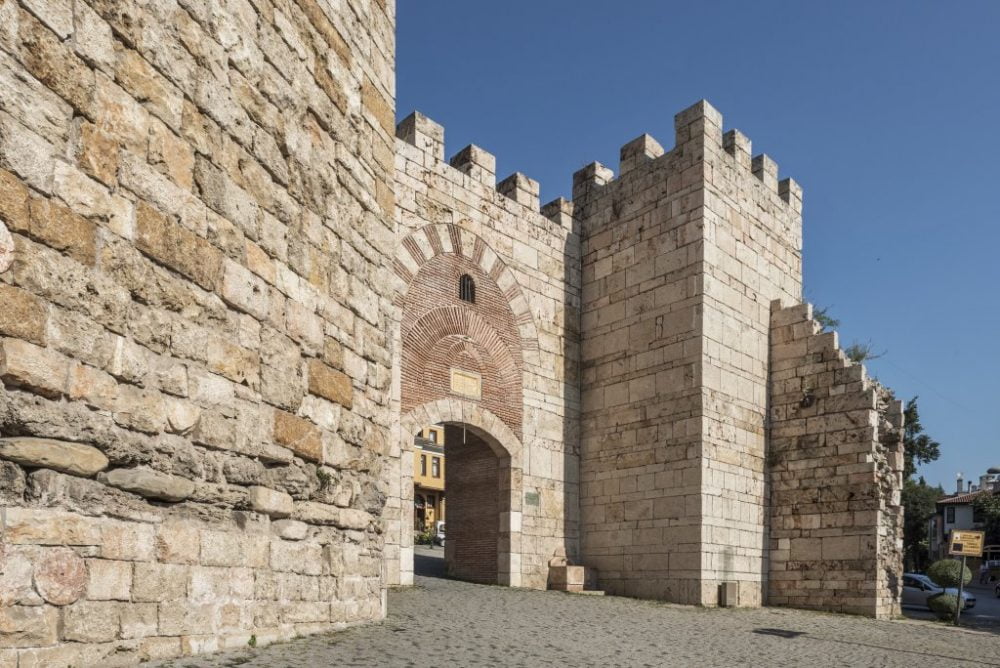
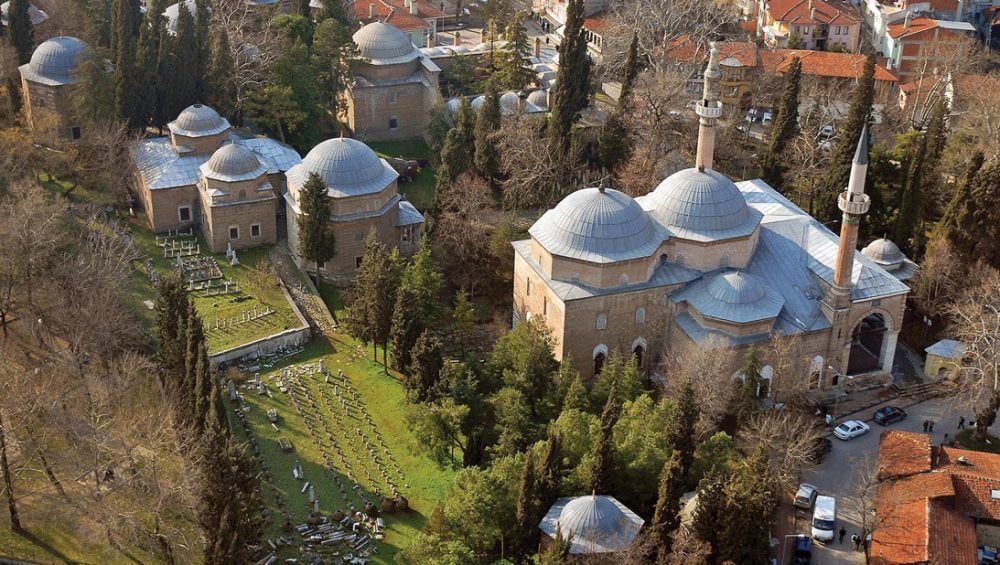
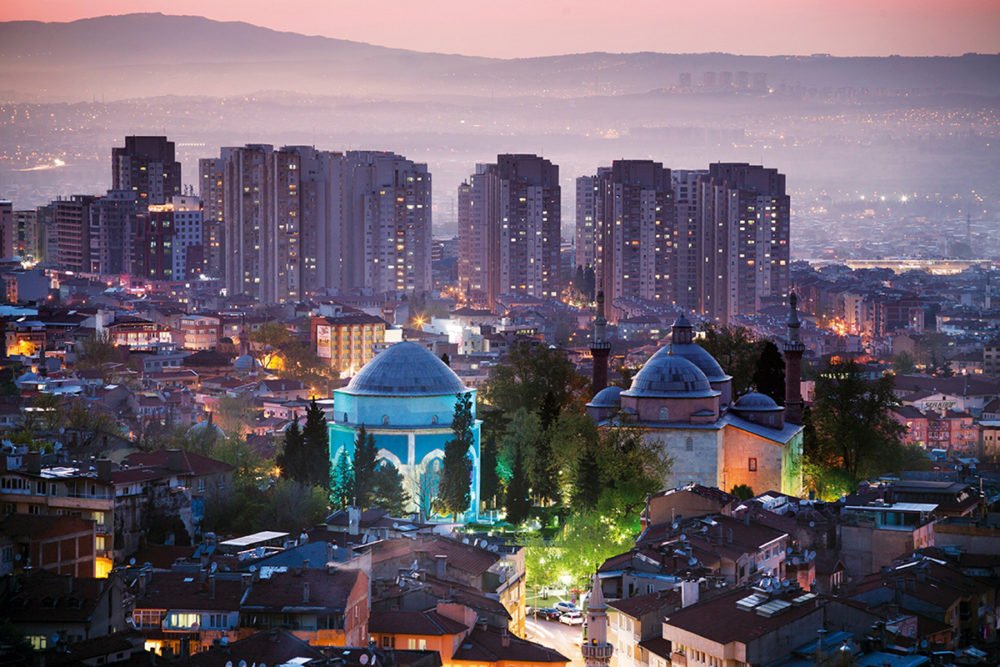
Downtown, the first obvious stops are the Ulu Camii (The Grand Mosque) and the Kapalı Çarşı (Grand Bazaar).
The grand mosque of Bursa was built to overwhelm. Unlike the gigantic mosques in Istanbul, the Ulu Cami was built as a rumble of smaller domes and columns, its roof undulating in waves.
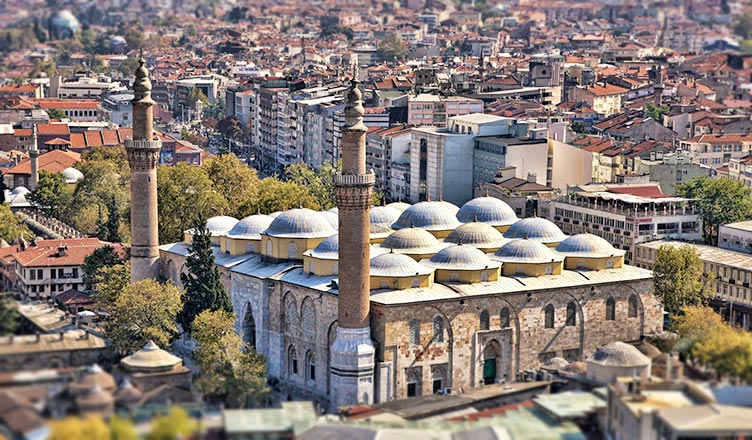
Outside your eyes will follow the swoop and bellow of every dome; inside you’ll see the many names of God in big block Arabic on every otherwise blank wall. It’s famous for its calligraphy, and the talent of the calligraphers comes forward in a barer style – fewer tiles or ornaments get in the way.
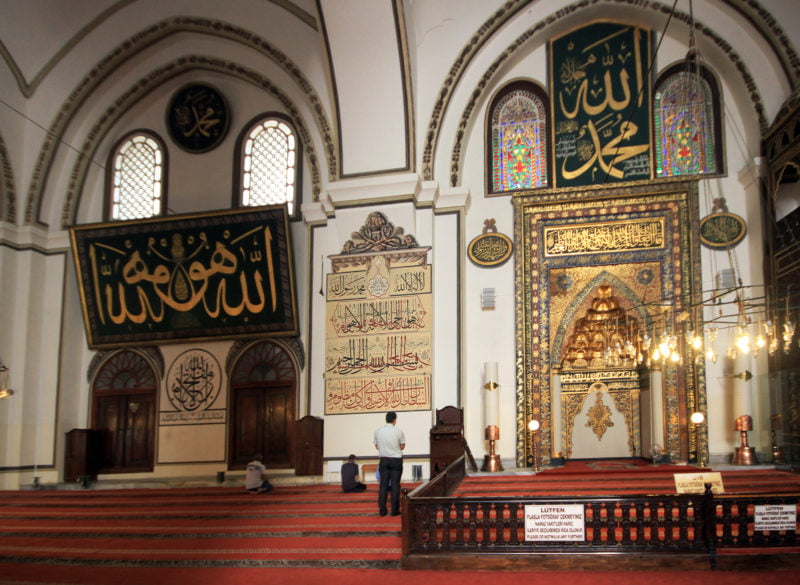
Outside your eyes will follow the swoop and bellow of every dome; inside you’ll see the many names of God in big block Arabic on every otherwise blank wall. It’s famous for its calligraphy, and the talent of the calligraphers comes forward in a barer style – fewer tiles or ornaments get in the way.

The koza (“cocoon” in Turkish) is where the silk comes from. A sericulturist will let the silkworms get just to the point of metamorphosis and then boil them alive. They catch a thread of silk from the cocoons in the bucket of water, and then thread them all through a hoop, and then spin the strands into thread. The Koza Han still displays a sheer variety of silk products – scarves, shirts, slippers, and pyjama trousers.
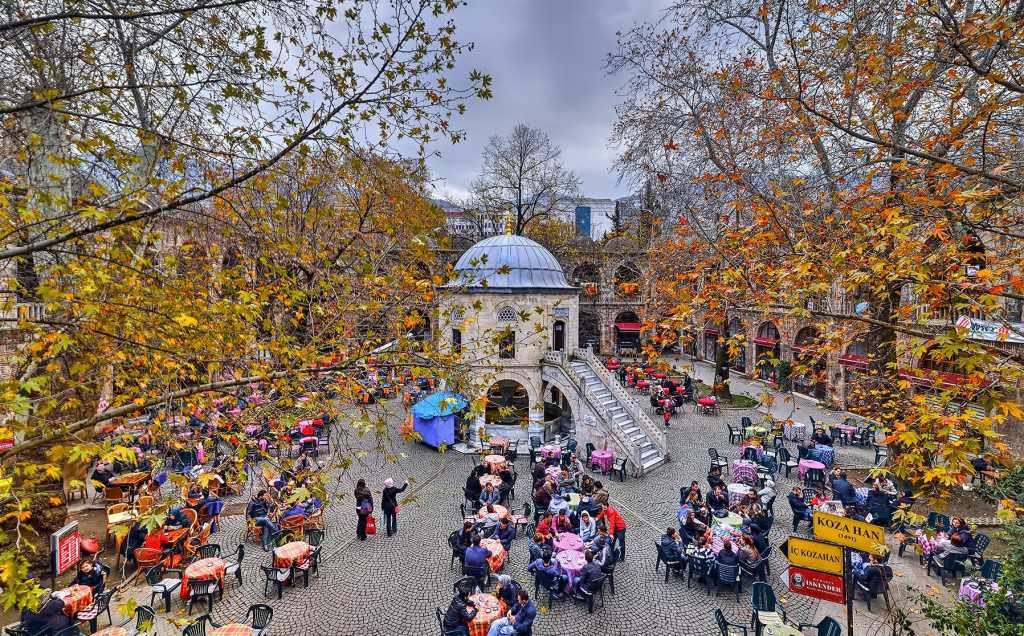
From the Koza Han, slip deeper into the covered bazaar until you find the Aynalı Carşı, the market with mirrors. This used to be a hamam until it got converted into shops and storehouses hundreds of years ago. It’s here that you can buy the best shadow puppets. During the construction of the Ulu Camii, two unbelievably lazy dudes started a comedy routine instead of working and drew a crowd. They got so unintentionally popular that nobody was working on the mosque, and, as the legend goes, the Sultan had them executed. Their names were probably not Karagöz and Hacivat, but those were the monikers given to the shadow puppets bearing their personalities. At the Karagöz Antikci in the Aynalı Çarşı, you’ll find a smiling shopkeeper ready to perform the same impromptu routines with jointed shadow puppets behind a sheet. But if you wanted to see a real show, you should head down to the Karagöz Museum in Çekirge on any Saturday at noon for a full-scale shadow play, and some detailed exhibits of puppets through the ages.

In the Hisar district, you can perambulate the streets to check out the old Ottoman-style noblemens’ houses. Two- or three-storey white plaster houses with brown trim give an appearance of order and cleanliness to the streets. Amid the houses be sure to visit some of the Külliyes for the dead sultans. The Muradiye complex is a must, as is the Emir Sultan Mosque.
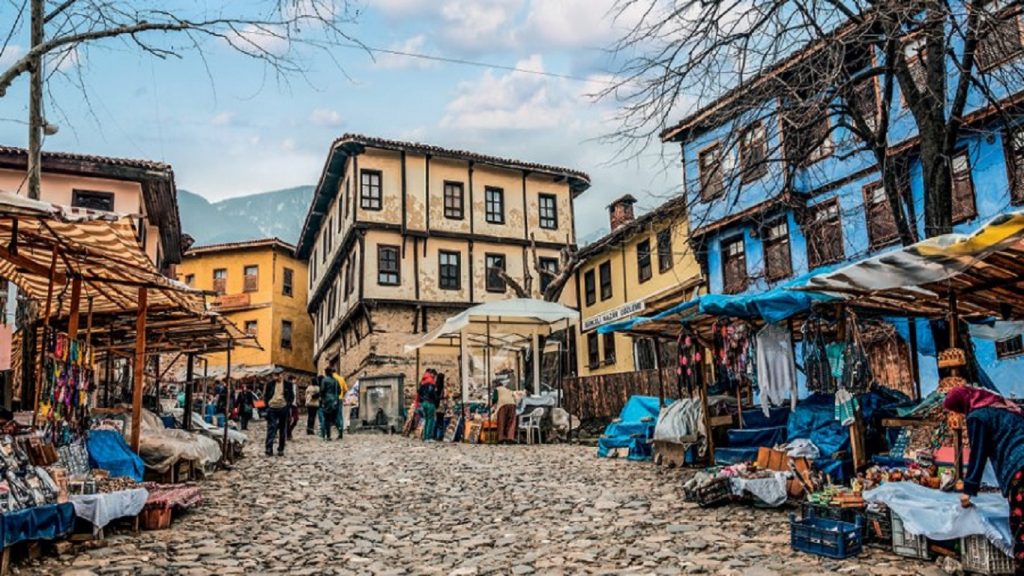
More than history
You’re all historied out by now, and probably more than a little nauseous from walking around with a full stomach. The only sane choice is to get into a bath. How about a genuine straight-from-the-underworld hot spring? The Eski Kaplıca Hamam in Çekirge has your back – and your arms, and your legs, and the friendly hamam workers will scrape all the dying skin cells off all of them. This marble fortress of domes and glass gets its heat straight from the Horhor spring, which blasts out water at a frightening 90 degrees Fahrenheit. But hey, that means it’s extra healthy and mineral-y, and probably better for your skin, right?
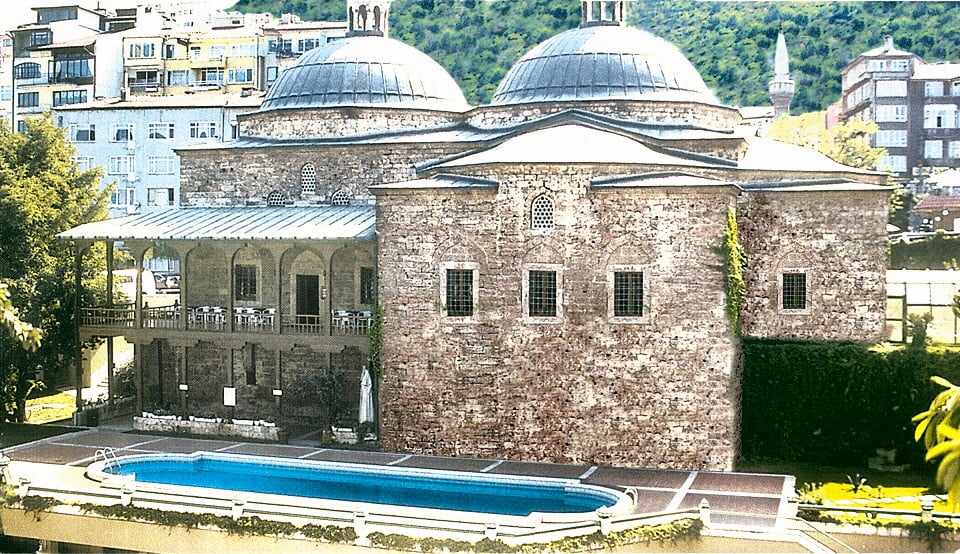
If you’re not into being scalded and scraped, you can always punish your muscles with a hike. And you really should do this before you trudge back to the ferry and make your way back to gritty, smoggy Istanbul. Bursa still boasts a huge Botanical park and an expansive zoo, and of course, Uludağ – the great mountain.
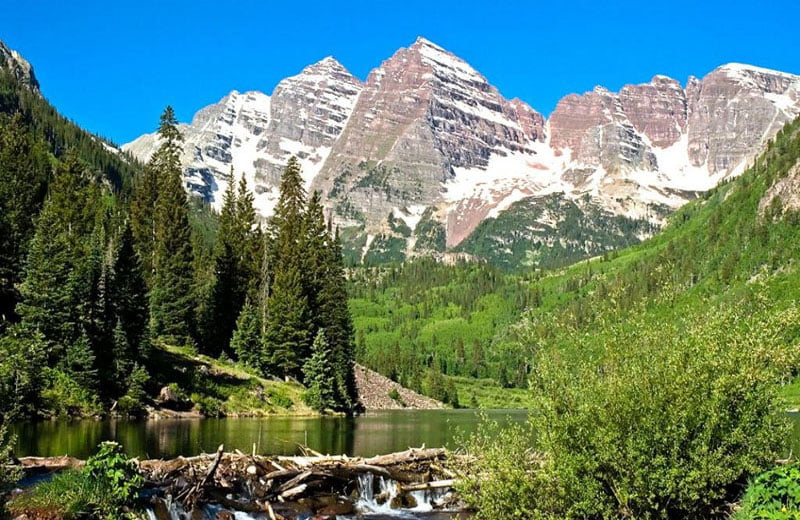
Though it used to be worshipped as Olympus, home to the Greek gods, modern locals and visitors had the sacrilegious audacity to build a massive cable car up the side of the mountain and go skiing on it.
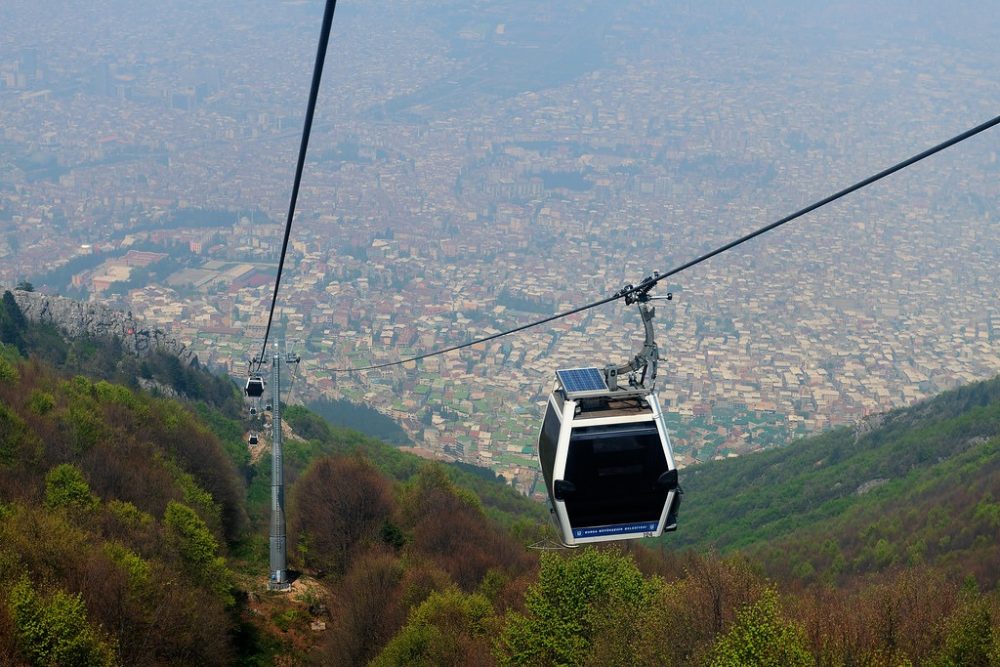
In the fall, you’re bound to get swamps of fog and the last green lushness of the season near the base, with alternating rains and freezes closer to the summit. But in the fullness of winter, you’ll probably run down Zeus as you ski down the slopes. Just don’t go skiing after eating an İskender Kebab – unless you’re planning on your friends rolling you down the mountain.
This article was first published in November 2017 and updated in 2022.

